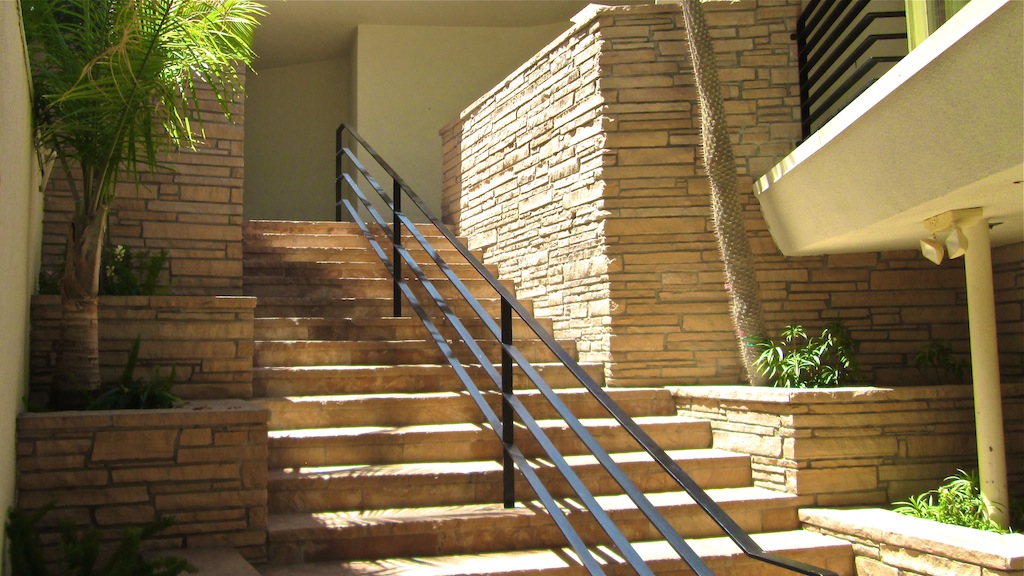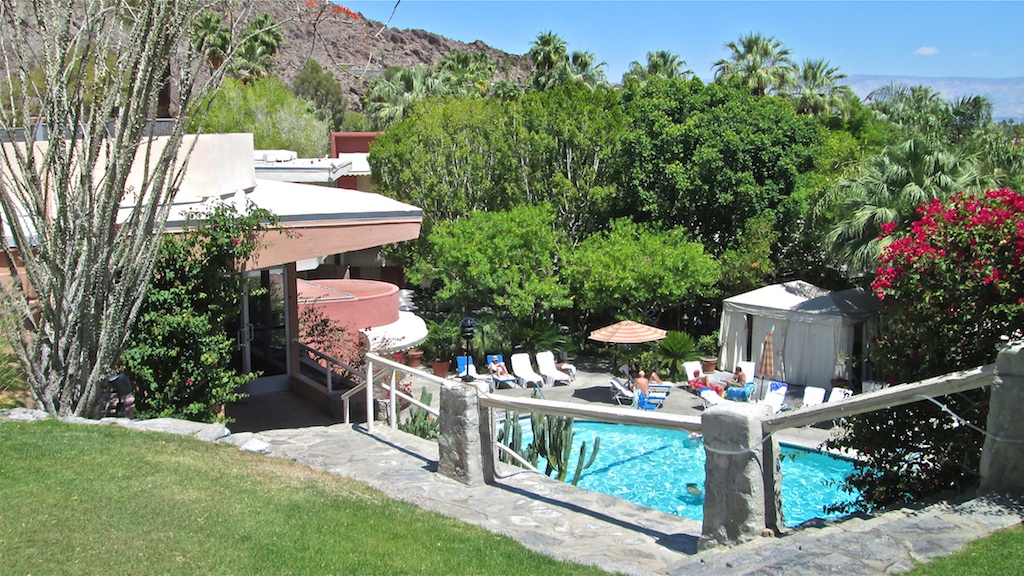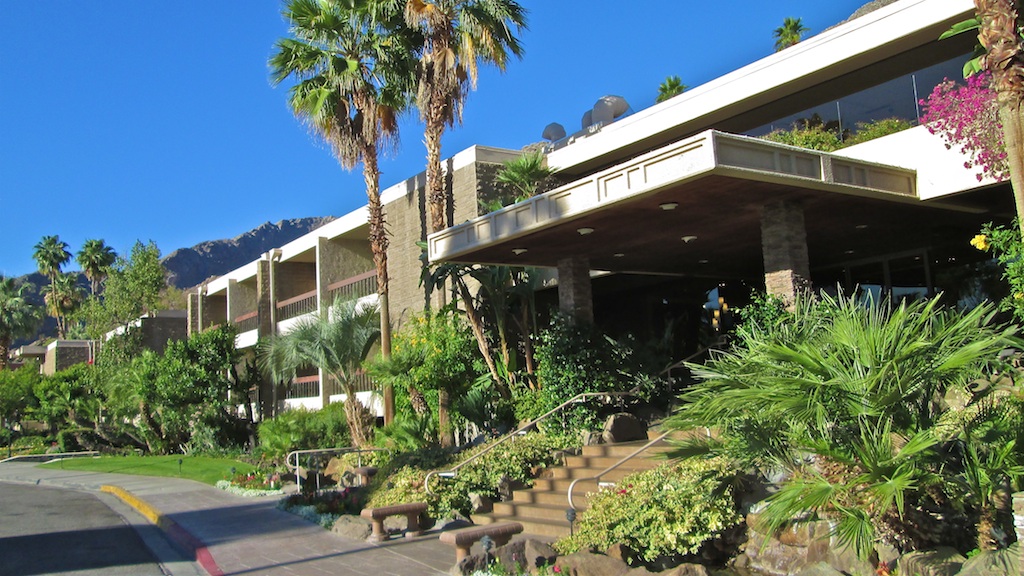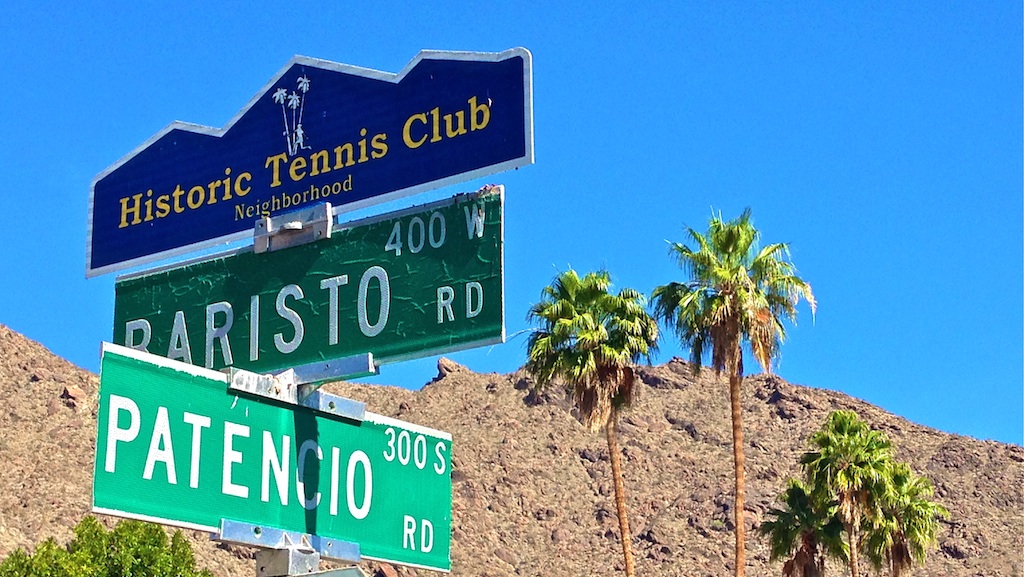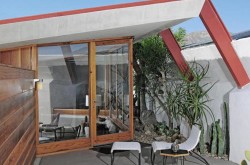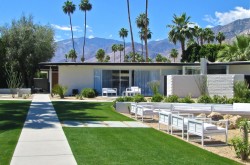Mid-century/desert modern buildings
Originally built in an Italian monastery style, the 1947 modernist additions to the Palm Springs Tennis Club have been cited by critics as a “successful example of contemporary architectural concepts at their best.”
By combining innovative modern designs with natural materials, architects A. Quincy Jones and Paul R. Williams completely transformed the traditional club into a “California modern” complex better suited to its natural desert environment.
Check out the awesome pool area which is built right into the mountainside, or the dining room with its use of wood, stone and expansive wrap-around floor to ceiling windows melding the indoors with the outdoors. This place is a desert modernist’s dream … and you can stay here too! Time share and vacation rental units are available from the adjoining condominiums.
Spencer’s Restaurant is also on the property, which is a great place to unwind with a drink or a nice meal.
Located in the Historic Tennis Club neighborhood; a beautiful area for a walk or bicycle ride and dotted with several mid-century modern boutique hotels and vacation rental condominiums.
For an interactive map of Palm Springs neighborhoods, click here. ..and as always, be respectful of homeowner’s privacy.
Visited 7648 times, 2 Visits today


